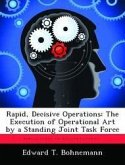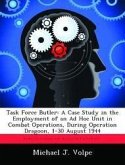United States involvement in Somalia encompassed a myriad of missions that were structured in three distinct stages. It began with the humanitarian assistance mission, Operation Provide Relief. Operation Restore Hope, the second stage, was a combination of humanitarian assistance and limited military involvement. The final stage, UNOSOM II, involved a peace enforcement and nation building mission. On Sunday, 3 October 1993, the relative success of UNOSOM II suddenly turned violent when a US Task Force came under heavy fire from Somali gunmen. The US Task Force, code named Task Force RANGER, was ill-prepared to cope with the type of urban guerrilla warfare prevalent in Mogadishu, and ultimately led to mission failure. This research paper will critically analyze this significant military defeat by uncovering the facts leading up to and during the mission. Once the facts have been uncovered, this paper will link the effects back to the causes of this disaster. Finally, this paper will propose alternative courses of action that may have improved the chance of mission success or prevented this disaster. In addition, these alternative courses of action should be used as learning tools for future operations other than war.








